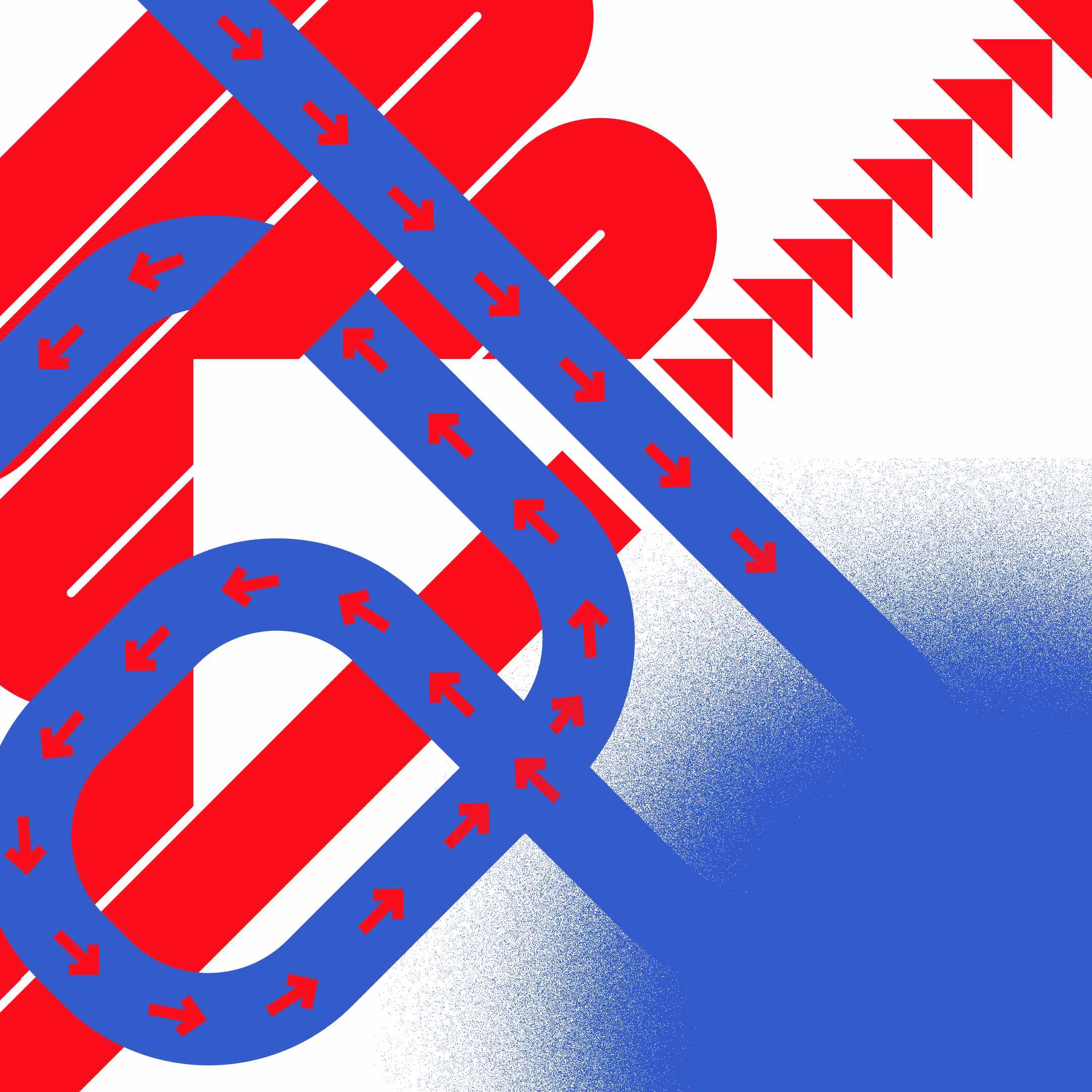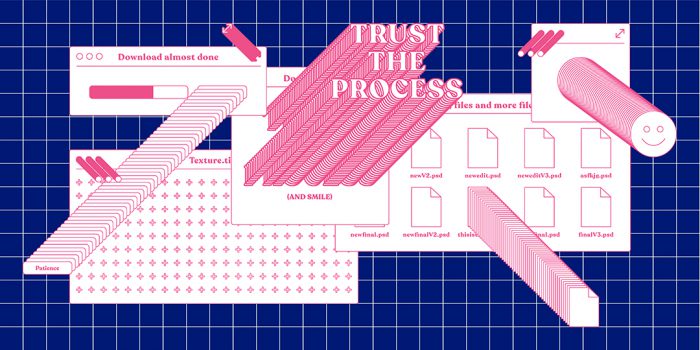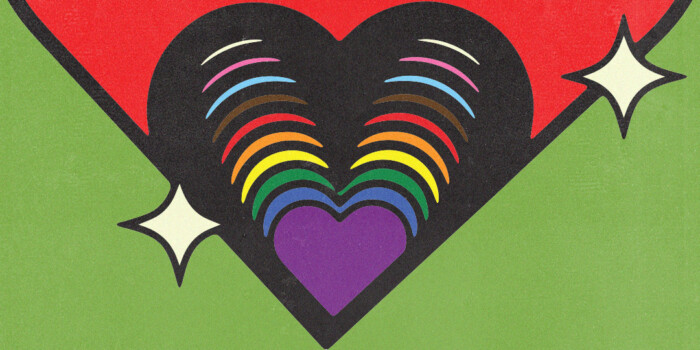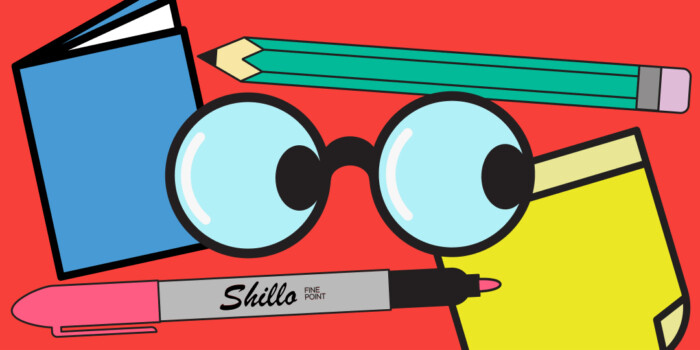What’s a Graphic Design Major? Courses, Requirements & More

The expectations of a graphic design major have changed a lot over the years with the idea of a comprehensive education in graphic design first prominently emerging in the climate of post World War I. The function of design needed to evolve from its pre-war focus: the creation of high quality designed outcomes and luxury objects created for the wealthy elite. That no longer fit or sat well in a world where excess was shunned and wealth was certainly not abundant. The creative future now looked across a post-war horizon and if design was to evolve into the 20th century, it needed to pivot.
Cue: The Bauhaus. A progressive art and design school founded by German Architect Walter Gropius. A balance between function, form and aesthetic value remained as the driving force, but with a new audience—mass society. The Bauhaus eventually folded, cited as a hub of political crime—but the floodgates were open and possibilities for design education emerged all over the world.
Fast forward to the 21st Century: here you are. A modern creative being who wants to study design but with all the divergent paths in front of you—you feel spoiled for choice and overwhelmed. Where to begin?
Read on to discover what a graphic design major looks like in this day and age, courses you’ll need to take, prerequisites and alternative options! At Shillington, we don’t offer majors—but if you’re looking for an alternative route that condenses your study and leaves you industry ready in record time—keep reading to find out how!
What’s a Graphic Design Major?
A graphic design major is a specialization within higher education. Post high-school formal study which ends (upon completion) in a tertiary qualification. Usually a diploma or degree of sorts. It’s typically undertaken in a college or university and if you choose to embark on this journey, you can expect to dedicate about three to fours years full-time of your waking existence to the pursuit of creativity.
To study a major indicates graphic design will be your primary qualification and bulk of your study (directed towards your intended career goal upon graduation). The name of the qualification you will receive at the end of your study could be titled a variety of things and depends on which institute you decide to study at and its location. You could receive a Bachelor of Graphic Design, Bachelor of Visual Communication, Bachelor of Science with a major in Graphic Design or a Diploma/Certificate of Graphic Design etc. But no matter the name, a student will engage in a similar curriculum across all options.
To pursue a professional career in graphic design in this modern existence does not necessarily require a formal education. But there are many advantages to undertaking a graphic design major—for example:
-
- Industry Preparation
A graphic design major provides you with a well rounded background in design and exposes you to the creative process e.g. collaborative work and critique. - Credentials
Having attended a well known school with a good reputation can give you credentials which look good on your CV and boost your career. - Higher Salary Potential
There is potential award of a higher salary to candidates who have a higher education qualification - Network and Community
A structured program gives you access to design professionals and provides you with an opportunity to build your network with peers, teachers and industry professionals.
- Industry Preparation
What courses will I need to take?
If those perks sound good, there’s a bit more to consider. If you’re going to be spending much of your waking hours engaged in this study for the next half decade of your life, you’re probably wondering about the minutiae. What subjects are needed to become a graphic designer? What exactly will you be filling and expanding your mind with for the foreseeable future? To answer that—we’ve compiled a breakdown of graphic design college courses you can expect when studying a graphic design major.
Phase One: Conceptual Framework—Design Theory
A graphic design major description usually commences with some theory to help a budding designer understand the world they will step into, and the context and form from which their creative endeavours should sprout.
- Design History, Design Thinking, Design Principles & Colour Theory
Design History: In the world of design—history’s creative predecessors have established an illustrious trail of knowledge and inspiration. In graphic design college classes—to learn about the history of design allows you to pick the brain of creative geniuses. This helps a designer understand the impact of society and culture on creative outcomes and processes—how a designer responds to their time and place.
Design Thinking: Before the completion of a designed outcome—a concept must be created first. Graphic design major classes teach design thinking—a non-linear iterative process in which an idea is defined, understood, ideated, tested and then finally created/launched. This process varies between creatives and each designer will adapt and define their own approach to the creative process.
Design Principles & Colour Theory: When thrown in a new world, it’s only natural that to survive you must learn to speak the language. Design is no different. As a designer you will have to learn to speak a different language to which you are used to. Visual language. The principles of design are rules a designer must understand and follow when they create visual outcomes—this language underpins every visual element we see in our modern world.
Furthermore, you’ll have to learn a touch of colour theory. Gone are the days where you may have found collateral delivered in only black and white. Our world is fully coloured and to learn colour theory is paramount in the creation of harmonious, attractive and eye-catching design.
Phase Two: Typographic Fundamentals
- Typography & Typesetting
The best friend and complement of the visual elements of design is typography. A fundamental graphic design course requirement. Written word is the primary way civilisation has communicated with each other in a permanent manner for centuries. Most cultures in the contemporary world have developed a written alphabet which communicates and complements spoken language. This all falls under the umbrella of typography.
Typography: This simply put is ‘the style and appearance of printed matter’. In today’s application, this translates to digital and physical print. From the text you read right here on this website, to the pizza shop flyer that landed in your letterbox last week—these are all examples of typography. In your graphic design major classes you’ll learn about the vast library of forms typography can take and its important role in communication in design.
Typesetting: The treatment of typography on a page, the arrangement of printed text. As you will have learned, visual elements aren’t just geometric shapes. Just like the principles of design, typography is used by designers to communicate a visual message. Typesetting is the interpretation and set out of this data in a way which best conveys the intended outcome.
Phase Three: Application of Framework And Fundamentals
- Technical Skills (Design Software), Professional Application, Honours Year/Major Project
Now your design foundations have been established, it’s time to take the theoretical knowledge and apply it in practice in your graphic design major classes.
Technical Skills (Design Software): As per industry standard, you will probably learn to use and navigate the Adobe Suite. This is mainly comprised of the ‘Big Three’:
adobe InDesign—A desktop publishing and typesetting software used to create digital and print layouts.
adobe Illustrator—A vector graphics editor used to create everything from logos to icons and graphics.
adobe Photoshop—A photo editing and manipulation software which can also be used to create digital painting and drawings amongst other things.
Aside from the Adobe suite you can expect to dabble in some Web or UX/UI Design, depending on the specifics of your graphic design major description. Where you’ll come into contact with software like Adobe Dreamweaver, Adobe XD or Figma.
Professional Application & Honours Year Major Project
The main goal of any kind of further study is geared towards an intended career and ultimately employment. The result of doing a graphic design major is no different. Upon graduation, a student designer should have an understanding of how the design industry works and how to attract and conduct paid opportunities. A student will typically undertake graphic design college courses that prepare them for the real world.
To launch a career as a graphic designer—it’s no secret that the recipe for success doesn’t lie in the number of years you’ve studied, or in some cases even where you’ve studied. The proof in the pudding and more often than not what will snag you the job—is a stellar portfolio. Graphic design major courses like this will help you develop a professional identity—portfolio and personal branding which you will be able to use to apply for jobs right upon graduation.
When it comes to an honours year or major project—this is typically a year long affair. Where the design student will direct and complete a creative project from start to finish. This is a great opportunity to have creative free-reign—and allows the student to show off the culmination of their skills and learnings over the course of the major.
Don’t Forget About Prerequisites!
But wait—before you can even begin to dive into the course, there’s some things you may need to have done. The graphic design prerequisites of many colleges dictate that you will at a minimum need to have completed secondary or higher school education. And if that isn’t an option, many schools and private colleges require a submission of a creative portfolio as proof of creative talent and potential.
But what if you don’t have these graphic design prerequisites. Don’t believe yourself to have the creative capacity to whip up an impressive portfolio? And what if you’re at a loss as to where to begin when it comes to learning design software? Not to mention if you want to study in another country, you may be required to take a formal literacy test.
With those factors in mind you’ve been essentially struck out from a creative future. With no skills and no place willing to take you in to help you grow and develop your creativity. It seems like a dead end. But wait—is it? Or is there another way…
Is There Another Way?
Yes! Shillington’s fast-paced graphic design course may just be your knight in shining armour. If you want to change your life and career right now—but are afraid of obstacles like time, money and ability—we’ve got you covered.
With a major spread out over 2-4 years at university, it can be hard to synthesise all the pieces of knowledge you’ve collected, and graduate industry ready. Shillington condenses all the learning of a graphic design major into an intensive 3-month full-time or 9-month part-time courses. Where our study is set up for you to develop a strong design foundation, graduate and get hired—all in under a year.
No prerequisites. No experience required. No long commitments, and no walks into the real world without being professionally prepared. Shillington is a commercially-driven portfolio course and as we know in the design industry—an amazing portfolio is what gets you the job. With us you will gain a commercial graphic design portfolio, a website and a skill-set equivalent to a Junior Designer.
Conclusion
Hopefully this gave you an idea of what studying a graphic design major would be like and helped you decide what to do with your creative future! There are many ways of becoming a graphic designer and learning graphic design. If you’ve been thinking about studying graphic design, but things have been holding you back from pursuing the traditional path—why not consider studying at Shillington?
Artwork by #ShilloMEL Teacher Nathan Millard
Many of our graduates have been in your position, and they took the leap to study with us and never looked back! You won’t regret it, trust us—we have hundreds of graduates who were once in your shoes and are now working in graphic design all over the world.
Want to follow in their footsteps? Then come on board, our full-time, part-time and online graphic design courses are open for enrolments now. You’ll learn to become a graphic designer and embark on a new career in just three months to nine months. What are you waiting for?
Want to win some amazing prizes and stay in the loop with all things Shillington? Sign up to our newsletter to automatically go in the draw.







